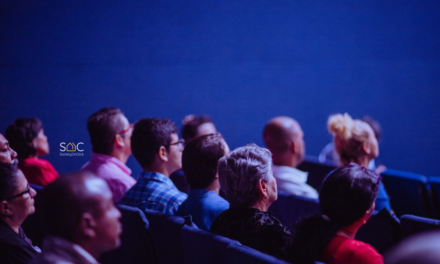Explained: Meetings in a Cooperative Housing Society
A meeting is a formal assembly of people to discuss and decide on a list of topics. It is an efficient tool for complex, group decision-making. And the decision-making unit in a cooperative housing society i.e. the managing committee is a group of 5 or more people. Thus, meetings are a vital part of the management of a cooperative housing society.
In this article, you will understand the different types of meetings as well as the pre, in, and post-stages of a meeting along with the dos for each stage. Click on the links below to explore each question or continue reading to understand how meetings address the complexity of many-to-many interactions in a cooperative housing society.
Why are meetings important in a CHS?
Cooperative Housing Societies are a housing arrangement managed democratically by the members living within. In this setup, a representative group is elected from amongst the members to manage the society.
The decision-making unit not only requires multi-people coordination but also demands answerability to other resident members. This makes seamless and organized communication an essential foothold for the smooth functioning of the society. And thus, meetings become a vital tool for coordination in cooperative housing societies.
Depending on the participants and the purpose of the interaction, different types of meetings are designed. Furthermore, each of these types has specific guidelines on how to call, conduct and close the meeting. The next section will shed more light on these types.
Types of Compulsory Meetings
In a cooperative housing society, meetings primarily fall into two broad categories:
- Internal Committee Meetings – The internal committee meetings are for frequent communication and discussion amongst the managing committee members.
- General Body Meetings – General Body is the body comprising all the members with voting rights in a Society. Hence, general body meetings are inclusive of all society members. They are further divided into 3 types based on their purpose.
Thus, a total of 4 types of meetings are significant for a cooperative housing society-
- Managing Committee Meeting
- First General Body Meeting
- Annual General Body Meeting
- Special General Body Meeting
Let’s understand each of these meetings in detail –
Managing Committee Meeting (MCM)
MCMs are developed to promote consistent communication within the managing committee. The primary focus is to discuss the relatively smaller and recurring topics necessary for managing the society.
To formally communicate within the committee and discuss matters related to day-to-day working
Minimum 1 per month
Any Committee Member
Minimum 12 per year
First General Body Meeting (FGM)
The most primitive General Body Meeting is the one held right after society formation. It is attended by all registered society members with a valid voting right. As the name suggests, it is the first-ever meeting of the society to decide on procedures for society management from thereon.
To decide on essential post-formation actions and draw out the foundation steps for society management.
Within 3 months from the society registration date
Chief Promoter
Only 1 in society’s lifetime
Annual General Body Meeting (AGM)
AGM is the most important meeting and the yearly pivotal point for every cooperative housing society. It is a compulsory meeting that must be held yearly with the whole General Body present. The sole purpose is to put forward all the work done by the managing committee in that financial year, approve financial records, and vote on pre-informed essential matters.
To close the financial year by reviewing and approving all work as well as to discuss and decide on yearly recurring matters.
Within 6 months from the end of financial year (31st March)
Managing Committee, primarily the Secretary
Only 1 per year
Special General Body Meeting (SGM)
The AGM can only be held once a year and only within the specified period. Hence, a special meeting is provisioned in case any urgent matter arises that requires the attention of all society members. It is not a mandatory meeting and must be used only if needed by society. Additionally, it is conducted only to discuss the pre-informed special cause.
To discuss and decide on the special urgent matter that can’t wait till the occurrence of AGM.
As per requirement
Primarily the Secretary and then the Chairman
0 to N (as deemed necessary)
How to call a meeting?
So far, we have learned that meetings are a formal communication medium. Hence, a standardized procedure must be followed to call any type of meeting.
The first step is to decide to have the meeting and realize the purpose of doing so. The meeting type is determined by the purpose and in turn, decides the meeting invitees. These invitees are informed using a formal intimation called Notice. So, what is a Notice?
A Meeting Notice is a formal letter sent to the designated meeting participants which outlines the meeting type, purpose (agenda) and day-date-time-venue details of the scheduled meeting.
The meeting notice is made up of the following components:
- Meeting Type – MCM, AGM, SGM, or FGM
- Agenda – Points to be discussed in that meeting
- Joining Info – Date, Time, Address, Mode (Online or Offline)
- Signatory – Society Stamp and signatures of authorized position holders
- Disclaimers – Any notes related to expected quorum, preparation, or attached documents
The drafted notice is then sent to relevant parties depending on the meeting type –
- MCM – to all current committee members
- FGM – to all the present registered members of the society
- AGM/SGM – to all valid members of the society
Additionally, for each meeting, only the points mentioned in the agenda for that meeting can be discussed. No other points can be brought up unless a provision to do so has been made in the notice as the last agenda point – ‘to discuss any other matter.’ Even then, it is at the committee’s discretion whether to accept the point for discussion.
How to conduct a meeting?
The meeting organizers must arrive at the decided venue a few minutes earlier than the scheduled time. All facility equipment must be checked and set up as needed. Seating must be made available based on the expected participation.
Each meeting has a set quorum (the minimum required attendance) for the meeting to continue as planned. An additional 30 mins beyond the scheduled time are allotted to wait for a quorum if not attained. An attendance record must be maintained and all the participating members must sign across their names in the member list maintained by the committee. It is the committee’s responsibility to ensure that the member attending the meeting is a valid member and has the right to attend it. If found otherwise, the committee can direct the individual to return.
In case the quorum is not attained even after waiting for 30 mins, the meeting must be postponed. It can commence without postponement only if a disclaimer to do so was mentioned in the official notice of the meeting.
At the start of the meeting, a moderator from the committee (most probably the chairman) makes an opening statement. It is then the responsibility of the committee members to only discuss the agenda outlined in the official notice. The chairman or another committee member presiding over the meeting announces the topic to discuss and the attendees are invited to participate in the discussion. All the agenda points are catered to in this manner until the last point. The presiding member then makes an ending statement summarising the meeting outcome and declares the end of the meeting.
How to close a meeting?
In a multi-participant setting, the interaction is complex and hence must be noted in a structured format. This formal record maintaining the communication details of the meeting marks its closing. This is done in Minutes. In literal terms, it documents the meeting events by the minute.
Minutes of a meeting record the following:
- Meeting Held details such as the Time, Mode & Venue
- Topics discussed in the meeting
- Detailed discussion for each of the topics
- The final decision on each topic
- Member names as per their contribution and role in the meeting (wherever necessary)
Drafting this official document is the responsibility of the managing committee within a specified period. The document is then made available to all the attendees for reference and verification. Any concerns about the details recorded can be raised by the attendees along with valid reasons and must be submitted to the managing committee.
The committee will analyze these change requests and decide on whether to accept or decline them. Accordingly, the minutes will be altered to form the final version. The final version of the minutes then becomes a part of the official record.
Minutes prove very useful in the long-term as they allow you to refer back to specific meeting details of what was discussed or what were the opinions of the attendees in case a question arises in the future. Thus, the decisions taken and recorded in the minutes are valid legal proof.
Send a Message
Contact Us
Phone
+91 9867751789
hello@societyonclick.com



